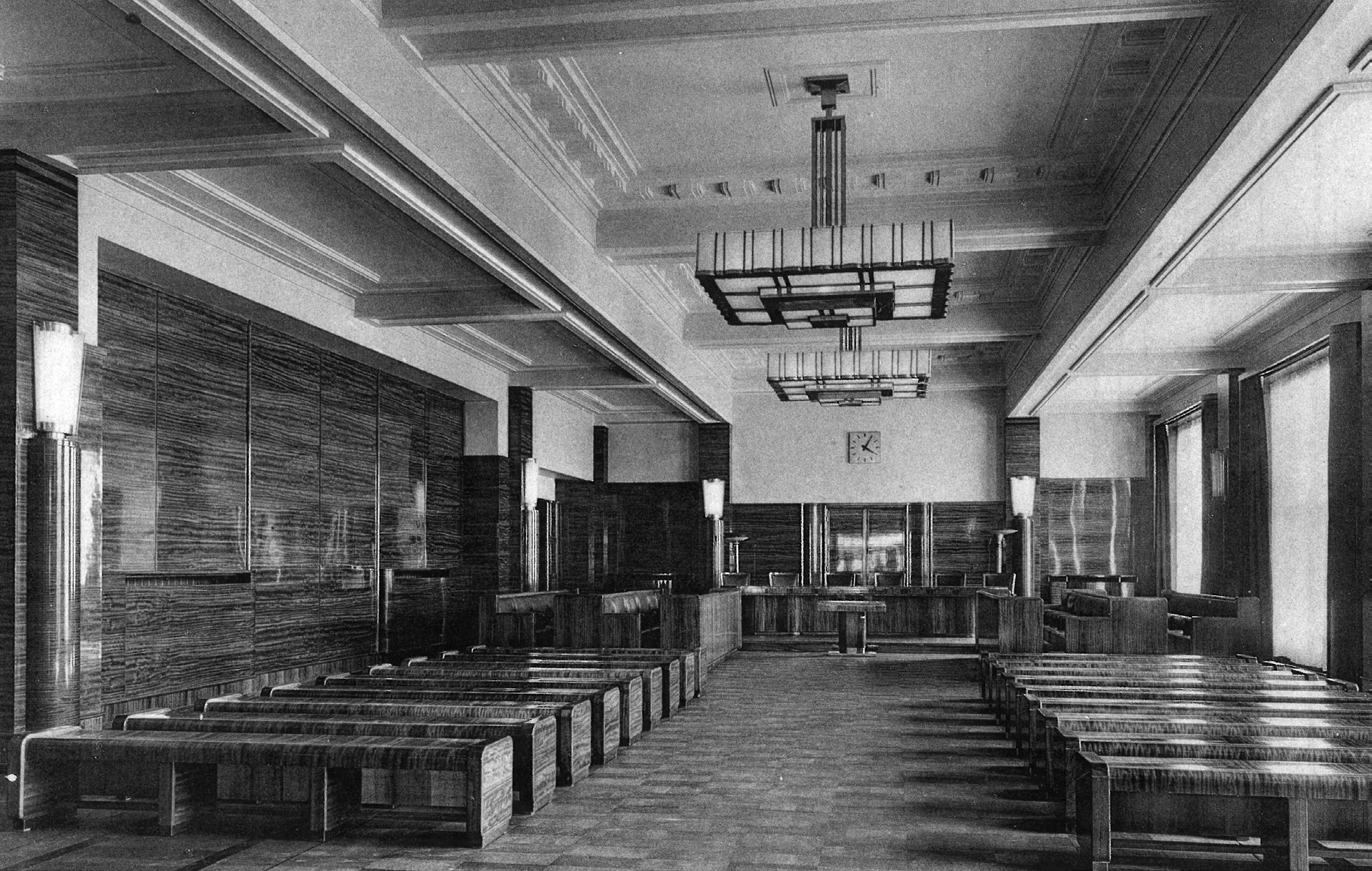


JEAN-BAPTISTE DEWIN AND JOSEPH DE COENE
a long-lasting friendship and a fruitful collaboration
The De Coene Brothers Art Studios was founded in Courtrai by Joseph and Adolphe De Coene in 1905, and played an important, international role in construction, the development of interior design, furniture, building techniques and architecture. At the International Exhibition of Modern Decorative and Industrial Arts held in Paris in 1925, the firm exhibited a “Flemish combined dining room and sitting room” which was awarded First Prize by the international jury: this created new opportunities for De Coene at home and abroad. The huge amount of Art Deco designs produced by De Coene are still highly prized today. In 1929, just before the great depression, the firm reached the apogee of its success and employed almost 2,700 artisans in its various workshops, where entire tree trunks were sawn into planks or veneers before being transformed into sets of furniture exhibited in the company’s showrooms accompanied by accessories made in the firm’s various other workshops: ornaments, metalwork, carpets, marblework, glasswork and light fittings. The firm’s in-house design studio produced detailed designs for both mass-produced and custom-made products, the latter often designed for collaborative projects with architects and others.
In the firm’s art and design magazine Glandifer, printed in-house, “it can be said that here ‘the acorn has grown into a tree’ and, seen from a bird’s eye view, the top of this oak tree seems to be an entire JEAN-BAPTISTE DEWIN AND JOSEPH DE COENE: a long-lasting friendship and a fruitful collaboration Frontispiece of Glandifer, magazine published by De Coene Brothers Art Studios, 1926-1932. 42 43 THE THE forest!”19 This no doubt explains why acorns and oak leaves were so often used to represent the De Coene firm. Joseph De Coene (1875-1950) and Jean-Baptiste Dewin were friends. We do not know when they first met, but it may well have been at the Brussels Fine Arts Academy, where Joseph De Coene studied in 1894. They travelled to the USA together in 1921. De Coene was introduced there to the flourishing triplex industry, based on the process of gluing together three fine wooden veneers, a technique he later developed in his own workshops.
* Glandifer, issue 2, June 1927, printed by De Coen Brothers Art Studios, Courtrai.

JEAN-BAPTISTE DEWIN AND JOSEPH DE COENE
a long-lasting friendship and a fruitful collaboration
The De Coene Brothers Art Studios was founded in Courtrai by Joseph and Adolphe De Coene in 1905, and played an important, international role in construction, the development of interior design, furniture, building techniques and architecture. At the International Exhibition of Modern Decorative and Industrial Arts held in Paris in 1925, the firm exhibited a “Flemish combined dining room and sitting room” which was awarded First Prize by the international jury: this created new opportunities for De Coene at home and abroad. The huge amount of Art Deco designs produced by De Coene are still highly prized today. In 1929, just before the great depression, the firm reached the apogee of its success and employed almost 2,700 artisans in its various workshops, where entire tree trunks were sawn into planks or veneers before being transformed into sets of furniture exhibited in the company’s showrooms accompanied by accessories made in the firm’s various other workshops: ornaments, metalwork, carpets, marblework, glasswork and light fittings. The firm’s in-house design studio produced detailed designs for both mass-produced and custom-made products, the latter often designed for collaborative projects with architects and others.

In the firm’s art and design magazine Glandifer, printed in-house, “it can be said that here ‘the acorn has grown into a tree’ and, seen from a bird’s eye view, the top of this oak tree seems to be an entire JEAN-BAPTISTE DEWIN AND JOSEPH DE COENE: a long-lasting friendship and a fruitful collaboration Frontispiece of Glandifer, magazine published by De Coene Brothers Art Studios, 1926-1932. 42 43 THE THE forest!”19 This no doubt explains why acorns and oak leaves were so often used to represent the De Coene firm. Joseph De Coene (1875-1950) and Jean-Baptiste Dewin were friends. We do not know when they first met, but it may well have been at the Brussels Fine Arts Academy, where Joseph De Coene studied in 1894. They travelled to the USA together in 1921. De Coene was introduced there to the flourishing triplex industry, based on the process of gluing together three fine wooden veneers, a technique he later developed in his own workshops.
* Glandifer, issue 2, June 1927, printed by De Coen Brothers Art Studios, Courtrai.
EN

2003
Work by Marianne De Wil, decorative paintwork specialist, to create paintwork schemes for the walls of the ground and first floors.
1992
Restoration and conversion of the building by the Lantin-Schoreels-Clinquart-Minden architectural practice, under the direction of André de Molinari.
1 AUGUST 1979
CDA purchases 5 Avenue Henri Hollevoet, thus becoming the owner of all the buildings built in 1927 for Joachim Riez.
11 DECEMBER 1948
Death of Joachim Riez. The buildings are inherited by his sisters Elmyre and Denise.
16 DECEMBER 1927
Second building permit issued by the council covering some small changes to the initial plans.
26 JANUARY 1927
Preparation of site begins, followed by construction of 86 and 88 Boulevard du Jubilé and 1, 3 and 5 Avenue Henri Hollevoet.
5 JANUARY 1927
Joachim Riez submits an application to Molenbeek-Saint-Jean council for a building permit for four buildings designed by the architect Jean-Baptiste Dewin on the plot of land.
4 MAY 1925
Purchase of plot of land on the corner of Boulevard du Jubilé and Avenue Henri Hollevoet by Joachim Riez.